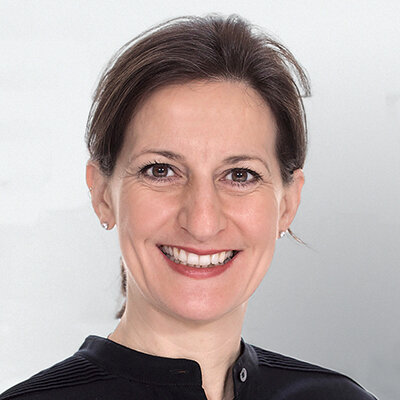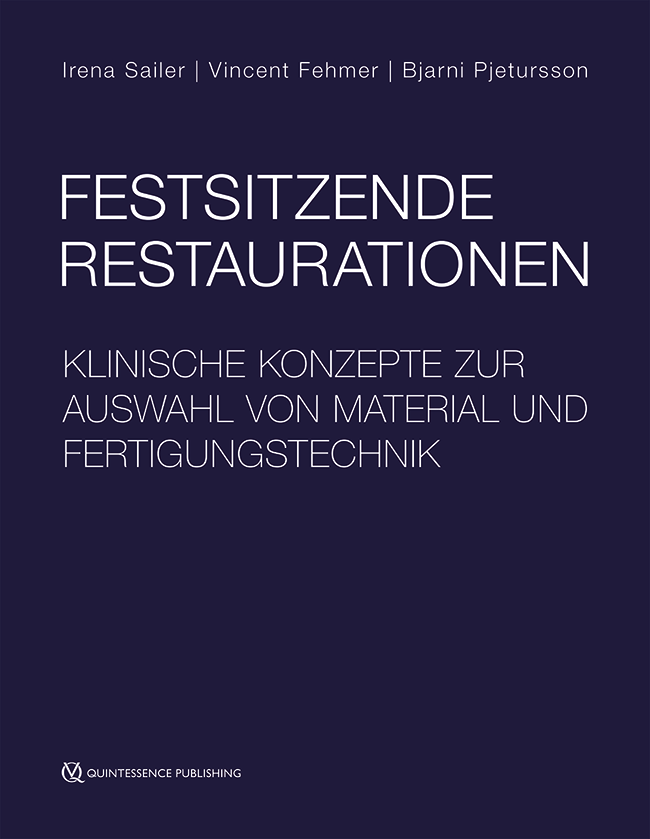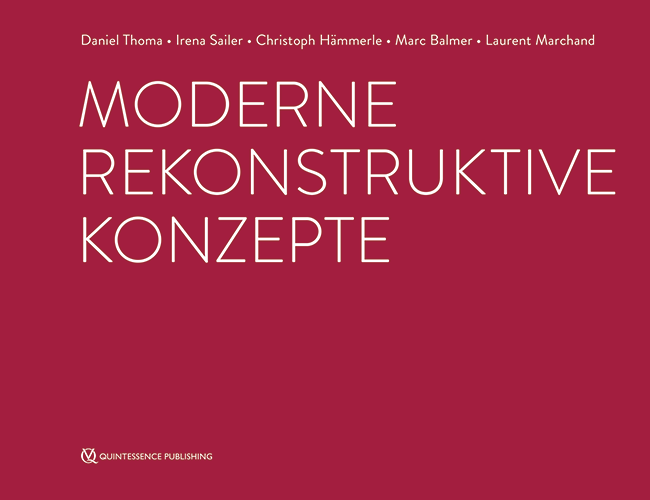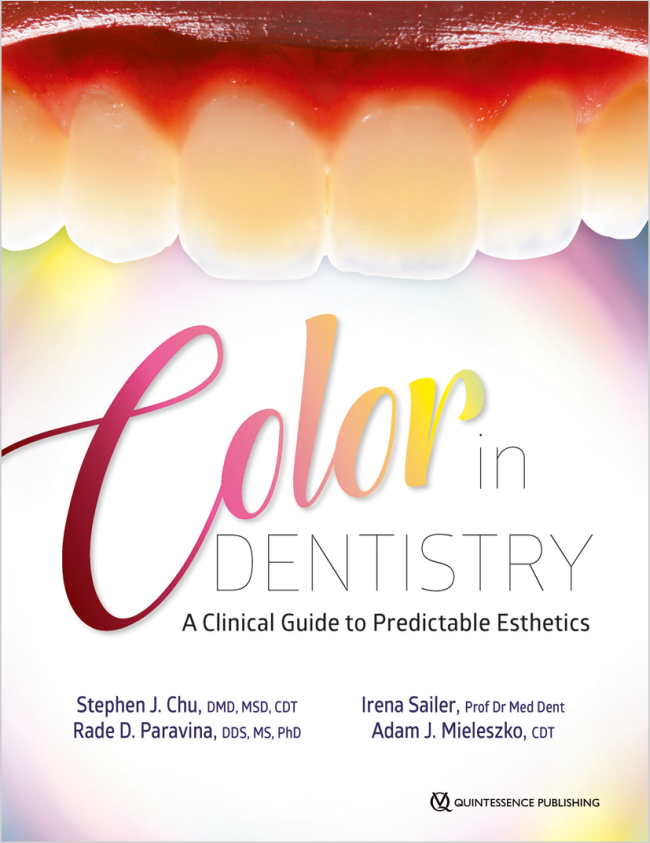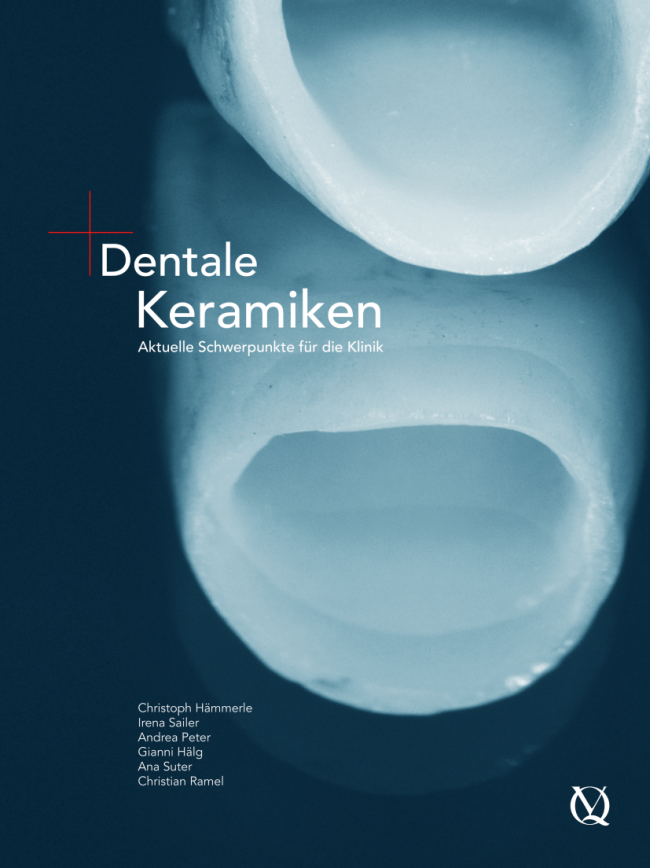The International Journal of Prosthodontics, 4/2025
Open AccessDOI: 10.11607/ijp.2025.4eSeiten: 381-382, Sprache: EnglischSailer, IrenaEditorial The International Journal of Prosthodontics, 3/2025
DOI: 10.11607/ijp.2025.3eSeiten: 277-278, Sprache: EnglischSailer, IrenaEditorial The International Journal of Prosthodontics, 2/2025
DOI: 10.11607/ijp.2025.2e, PubMed-ID: 40112279Seiten: 155-156, Sprache: EnglischSailer, IrenaEditorial The International Journal of Prosthodontics, 7/2024
Open Access Supplement Online OnlyDOI: 10.11607/ijp.8538, PubMed-ID: 38489221Seiten: s55-s62, Sprache: EnglischWan, Qiucen / Lee, Jae-Hyun / Daher, René / Karasan, Duygu / Myagmar, Gerelmaa / Sailer, IrenaPurpose: To evaluate the wear resistance of a printed interim resin manufactured with different printing and postpolymerization parameters. Materials and Methods: Overall, 130 rectangular resin specimens (15 × 10 × 10 mm) were 3D-printed. Among the specimens, 60 were printed with different printing orientations (0, 45, and 90 degrees) and layer thicknesses (50 and 100 μm) to create six groups to investigate the effects of the printing parameters (n = 10 per group). The remaining 70 specimens were used to evaluate the effects of postpolymerization; for this, seven groups were created as follows (n = 10 per group): nonpostpolymerized; postpolymerized for 5, 15, and 30 minutes with an ultraviolet light–emitting diode (LED) device; and postpolymerized for 5, 15, and 30 minutes with an ultraviolet light bulb device. After masticatory simulation, the wear volume loss was calculated with 3D metrology software. One-way and two-way ANOVA were used for intergroup comparisons (α = .05). Results: The group printed with a build angle of 45 degrees showed lower wear volume loss than the 0- and 90-degree groups (P < .01). The wear volume loss in the ultraviolet LED group was significantly greater than that in the ultraviolet light bulb group (P = .04). No significant difference was observed in the wear volume loss of the printed resin with respect to the layer thickness and polymerization time (P > .05). However, the non-postpolymerized group showed significantly greater wear volume loss than the other groups (P < .001). Conclusions: The printed resin showed greater wear resistance when it was printed at a build angle of 45 degrees and postpolymerized with an ultraviolet light bulb device.
The International Journal of Prosthodontics, 6/2024
DOI: 10.11607/ijp.2024.6.e, PubMed-ID: 39576937Seiten: 604, Sprache: EnglischSailer, IrenaEditorial The International Journal of Prosthodontics, 5/2024
DOI: 10.11607/ijp.8565, PubMed-ID: 37729480Seiten: 575-582a, Sprache: EnglischAzevedo, Luís / Marques, Tiago / Karasan, Duygu / Fehmer, Vincent / Sailer, Irena / Correia, André / Gómez Polo, MiguelPurpose: To evaluate the accuracy of complete-arch digital implant impressions using different intraoral scan body (ISB) materials and intraoral scanners (IOSs). Materials and Methods: The mandibular dental cast of an edentulous patient with six tissue-level dental implants was used as the master cast. Two types of ISBs—polyether ether ketone (PEEK) and plasma-coated medical titanium—were used with five IOSs: TRIOS 4 (T4), Virtuo Vivo (VV), Medit i700 (Mi700), iTero 5D (i5D), and Primescan (PS). To assess accuracy, digital impressions (n = 10) with each IOS and ISB were compared to two reference models obtained by digitizing the master cast with each ISB type using a desktop scanner (IScan4D LS3i) and importing the scan data into metrology software (Geomagic Control X). Root mean square (RMS) error was employed to evaluate overall deviation values (trueness), while precision was determined using the SD of RMS values. Statistical significance was set at P < .05. Kruskal-Wallis test was used, followed by the pairwise comparison method with Bonferroni correction (α = .05). Results: An interaction between ISB material and IOS was found (P = .001). Plasma-coated medical titanium ISBs demonstrated significantly higher trueness and precision compared to PEEK ISBs with T4 (P = .001), Mi700 (P = .001; P = .004), and i5D (P = .001). Conversely, VV exhibited higher trueness and precision values with PEEK ISBs (P = .005; P = .003). PS provided the highest trueness and precision regardless of the ISB material (P = .912). T4 showed the lowest accuracy for PEEK ISBs, and VV showed the lowest accuracy for plasma-coated medical titanium ISBs. Conclusions: Except for PS, all IOSs showed significant differences between ISB materials. PS demonstrated the highest accuracy with both ISB materials, whereas T4 had the lowest accuracy for PEEK ISBs, and VV showed the lowest accuracy for plasma-coated medical titanium ISBs.
International Journal of Esthetic Dentistry (EN), 5/2024
SupplementPubMed-ID: 38284928Seiten: S7, Sprache: EnglischSailer, IrenaLeading teams: Predictable esthetics through interdisciplinary collaborationsThe International Journal of Prosthodontics, 5/2024
DOI: 10.11607/ijp.2024.5.e, PubMed-ID: 39331578Seiten: 493-494, Sprache: EnglischSailer, IrenaEditorial The International Journal of Oral & Maxillofacial Implants, 4/2024
Online OnlyDOI: 10.11607/jomi.10656, PubMed-ID: 37939237Seiten: e121-e128, Sprache: EnglischMarchand, Laurent / Cornish, David / Mojon, Philippe / Sailer, Irena / Worni, AndreasPurpose: To measure the surface temperature distribution after using a CO2 laser to heat titanium dental implants via different power settings, application intervals, and irradiation times. Materials and Methods: A total of 10 tissue-level titanium implants (Screw-Line Promote Plus, Camlog; 4.3 × 11 mm) were placed (EpoFix, Struers) and irradiated with a CO2 laser (Denta 2, Lutronic) with a wavelength of 10.6 μm at power levels of 4 watts (Group 1), 6 watts (Group 2), 8 watts (Group 3), and 10 watts (Group 4). A continuous beam mode (setting I) and noncontinuous beam modes with 5-second (setting II) and 10-second (setting III) pause intervals were used. For each setting, a total irradiation time of 50 seconds was used and repeated 10 times. The temperature was measured using external thermocouple (Testo) in contact with the implant surface at the implant shoulder, middle, and apex. A linear regression model was used to analyze the data (P = .05). Results: Setting I demonstrated the most rapid increase in implant surface temperature in all three test sites as well as the greatest total temperature at 50 seconds of irradiation time. The greater the pause interval (settings II and III) during the 50 seconds of irradiation, the lower the rate of temperature increase as well as the total temperature in all three test sites and with all power levels. The average temperature difference between the apex and shoulder site was significant for setting III for all groups, but not for any groups in settings I and II. Conclusions: Heating the internal aspect of an implant with a CO2 laser produces different temperature distribution profiles depending on the laser power level and the application interval. Laser-beam irradiation leads to a temperature gradient, which is greatest at the implant apex and smallest at the implant shoulder.
The International Journal of Prosthodontics, 2/2024
DOI: 10.11607/ijp.8852, PubMed-ID: 38270461Seiten: 221-224, Sprache: EnglischRevilla-León, Marta / Barmak, Basir A. / Sailer, Irena / Kois, John C. / Att, WaelPurpose: To compare the performance of licensed dentists and two software versions (3.5 legacy and 4.0) of an artificial intelligence (AI)-based chatbot (ChatGPT) answering the exam for the 2022 Certification in Implant Dentistry of the European Association for Osseointegration (EAO). Materials and Methods: The 50-question, multiple-choice exam of the EAO for the 2022 Certification in Implant Dentistry was obtained. Three groups were created based on the individual or program answering the exam: licensed dentists (D group) and two software versions of an artificial intelligence (AI)-based chatbot (ChatGPT)—3.5 legacy (ChatGPT-3.5 group) and the 4.0 version (ChatGPT-4.0 group). The EAO provided the results of the 2022 examinees (D group). For the ChatGPT groups, the 50 multiple-choice questions were introduced into both ChatGBT versions, and the answers were recorded. Pearson correlation matrix was used to analyze the linear relationship among the subgroups. The inter- and intraoperator reliability was calculated using Cronbach’s alpha coefficient. One-way ANOVA and Tukey post-hoc tests were used to examine the data (α = .05). Results: ChatGPT was able to pass the exam for the 2022 Certification in Implant Dentistry of the EAO. Additionally, the software version of ChatGPT impacted the score obtained. The 4.0 version not only pass the exam but also obtained a significantly higher score than the 3.5 version and licensed dentists completing the same exam. Conclusions: The AIbased chatbot tested not only passed the exam but performed better than licensed dentists.



